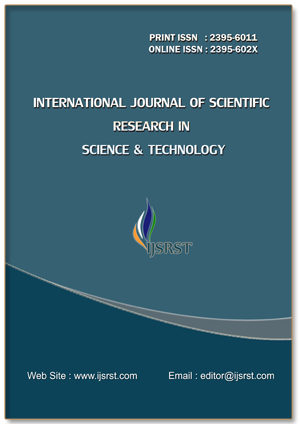A Comparative Study of Detection of Serum Total and Direct Bilirubin by Manual and Automated Methods
DOI:
https://doi.org/10.32628/IJSRST229395Keywords:
Direct bilirubin, Jendrassik-Grof, Malloy-Evelyn, Fully-autoanalyzer.Abstract
Background: Bilirubin is one of the major bile Pigment, clinically and biologically important among the bile pigments present in the mammals. Material and Methods; The Cross sectional study was conducted in department of biochemistry in the collaboration with department medicine in Civil Hospital Tarn Taran. Out of 90 patients, 54 were males and 36 were females. Result; The comparison of Serum Total and Direct bilirubin by Jendrassik & Grof and Automated method was Non- Significant with p value = 0.7788 and 0.5394 respectively. The comparison of Serum Total and Direct bilirubin by Malloy Evelyn and Automated method is Highly Significant with p value =0.0002 and 0.0003 respectively. The mean difference of malloy with jendrassik & grof and automated was 2.394 and 2.162 respectively and the mean difference of jendrassik & grof with automated method was -0.231. Conclusion; It was concluded that a good correlation is found between bilirubin detection by manual and automated method. Non- significant mean difference between Jendrassik & Grof and Automated makes it better than Malloy Evelyn.
References
- Hemoglobin, Iron & Bilirubin; Bilirubin, Chapter 28, Tietz Fundamentals of Clinical chemistry, 6th ed. 520-521 .
- Fischbach F, Dunning MB. A manual of laboratory and diagnostic tests. 8th ed. Philadelphia: Lippincott Williams & Wilkin; 2009:364. .
- Iyanagi T, Emi Y, Ikushiro S. Review: biochemical and molecular aspects of genetic disorders of bilirubin metabolism. Biochem Biophys Acta. 1998;1407:173-184.
- B T Doumas, T W Wu, B Jendrzejczak; Clin Chem. 1987;33:769-774.
- Heme synthesis & breakdown, Hyperbilirubinaemia, Chapter 21; Text book of Biochemistry D Vasudevan, 7th ed. 279.
- Ameri M, Schnaars H, Sibley J, Honor D. Comparison of the vanadate oxidase method with the diazo method for serum bilirubin determination in dog, monkey & rat; J Vet Diagn Invest. 2011;23:120-123.
- Doumas B T, Wu T W. The measurement of bilirubin fraction in serum; Crit Rev Clin Lab Sci. 1991;28:415-445.
- Rehak NN, Cecoo SA, Hortin GL. Photolysis of bilirubin in serum specimens exposed to room lighting. Clin Chem Acta 2008;387:181-183.
- Kazmierczak SC, Robertson AF, Briley KP, et al. Transcutaneous measurement of bilirubin in newborns: comparison with an automated Jendrassik-Grog procedure and HPLC. Clin Chem. 2004;50:433-435. 14.
- Cordova CMD, Nogara MS, Cordova MMD. Interference on the laboratory measurement of bilirubin: The effect of in vitro interactions. Clin Chem Acta 2009:407(1-2):77-79. 15.
- Fossati P, Ponti M, Prenclpe L, et al. One-step protocol for assay of total and direct bilirubin with suitable combined reagents. Clin Chem. 1989; 35: 173-176.
Downloads
Published
Issue
Section
License
Copyright (c) IJSRST

This work is licensed under a Creative Commons Attribution 4.0 International License.

